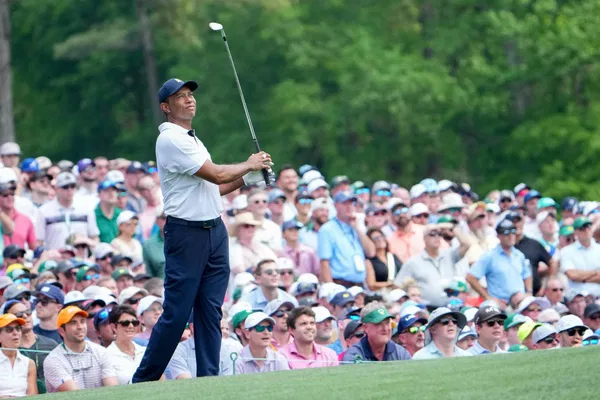
A golf shot doesn’t begin when the club meets the ball—it starts much earlier. The process begins before the golfer even approaches the ball, with a detailed assessment of the environment: evaluating the terrain, analyzing the likely ball path, identifying hazards, and visualizing the shot. The walk to the ball after a tee shot carries as much weight as the swing itself.
One of the most crucial early steps is examining the lie of the ball. According to Tiger Woods, this means checking whether the ball is above or below your feet, if it’s settled in a divot, or if it’s sitting in rough that might cause a flyer. Once the lie is understood, attention shifts to the green ahead. Woods believes in allowing the course layout to guide shot selection. Instead of always aiming for the flag, sometimes it’s wiser to play away from danger zones like bunkers or water hazards—an element many amateur golfers overlook.
<strong>The Stance</strong>
After evaluating the course and planning the shot, the next step is stance and setup. Ball position in relation to your feet plays a critical role. Woods explained that playing the ball too far back in your stance leaves the clubface open at impact. He emphasized that the swing arc must be considered, and minor adjustments in ball placement can make a significant difference.
<strong>The Swing</strong>
Once in position, it’s time to execute the swing, which Woods compares to a computer processing data. The earlier observations and stance are the input—the swing is the execution phase. A common amateur mistake is trying to help the ball into the air by swinging upwards. In contrast, Woods advocates hitting down on the ball to generate backspin and lift.

A proper backswing involves both vertical and horizontal components. Many players start their backswing too vertically, lifting the arms and cocking the wrists too early. This leads to a steep downswing and a chopping motion. To avoid this, Woods stresses the importance of a wide swing arc, initiated by stretching the arms away from the body and allowing the wrists to cock naturally around knee height. This technique builds power and prevents a steep downswing.
<strong>The Strike</strong>
Finally, the moment of impact is as much mental as it is physical. Woods believes in swinging through the ball—not at it. The ball should simply be in the path of an accelerating clubhead. Rather than ending the swing right after contact, he continues the motion down the target line, ensuring maximum transfer of force.
It’s also important not to consciously speed up the club at the moment of contact. The velocity should already be high when the club reaches the ball. Trying to increase speed suddenly or slowing down to “guide” the ball can disrupt the entire motion and affect control.
Woods’ detailed breakdown shows that every stage—from observation to strike—has its role in creating a successful shot. It’s not just about power or technique but about thoughtful execution and consistency. For golfers looking to improve, these insights offer a comprehensive path forward.